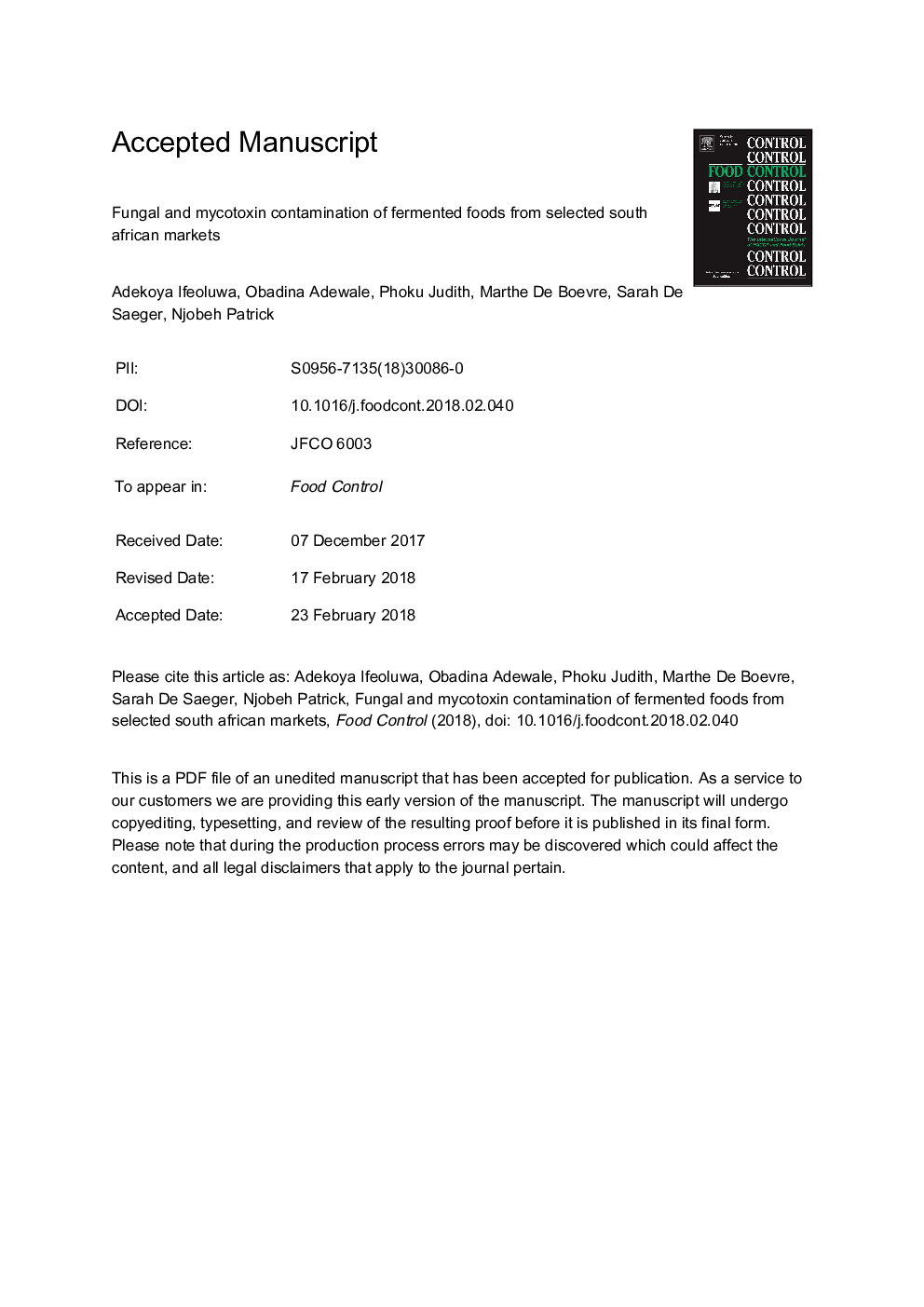| Article ID | Journal | Published Year | Pages | File Type |
|---|---|---|---|---|
| 8888000 | Food Control | 2018 | 19 Pages |
Abstract
In this study, five regularly consumed fermented foods: fermented melon (ogiri), locust beans (iru), African oil bean (ugba), maize meal (mahewu) and maize gruel (ogi) purchased from South African markets were evaluated for fungal diversity using 16S rRNA gene sequencing and mycotoxin contamination using liquid chromatography tandem mass spectrometry, respectively. In addition, their pH, moisture content, Total Titratable Acidity (TTA) and water activity were accessed. The investigation revealed a mean pH range of 3.60-8.14 within the samples and a significant but negative correlation between the pH and TTA (râ¯=â¯â0.560, pâ¯<â¯0.05). Ogiri samples had the highest mean fungal load (8.30â¯Ãâ¯105â¯CFU/g) and 340 fungal isolates belonging to 17 genera were recovered from all the foods analysed. The dominant fungal genera were Aspergillus and Saccharomyces. A total of 23 mycotoxins were quantified, aflatoxin B1 was present in 50% of the ogiri samples analysed with a mean value of 4â¯Î¼g/kg, whereas fumonisin B1 was detected in 37% of ogi (range: 42-326â¯Î¼g/kg) and 73% of mahewu samples had deoxynivalenol (range: 18-32â¯Î¼g/L). Overall, 66% of the samples (nâ¯=â¯176) had mycotoxins occurring singly or in combination which could pose some synergistic, additive, or antagonistic health effects amongst consumers.
Related Topics
Life Sciences
Agricultural and Biological Sciences
Food Science
Authors
Ifeoluwa Adekoya, Adewale Obadina, Judith Phoku, Marthe De Boevre, Sarah De Saeger, Patrick Njobeh,
